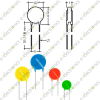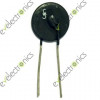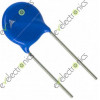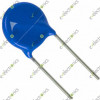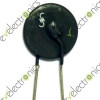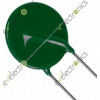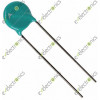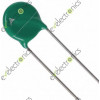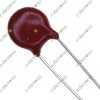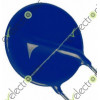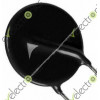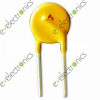- Batteries
-
Capacitors
+-
- Non Polarized +-
- Polarized +-
- SMD Capacitors Case A
- SMD Capacitors Case B
- SMD Capacitors Case C
- SMD Capacitors Case D
- SMD Multilayer Ceramic Capacitors 0402 (1005 Metric)
- SMD Multilayer Ceramic Capacitors 0603 (1608 Metric)
- SMD Multilayer Ceramic Capacitors 0805 (2012 Metric)
- SMD Multilayer Ceramic Capacitors 1206 (3216 Metric)
- SMD Multilayer Ceramic Capacitors 1210 (3225 Metric)
- Tantalum Capacitor
- Trimmer Capacitors
- Car Accessories +-
-
Connectors
+-
- Ethernet Cables And Connectors
- Audio Mono and Stereo Connectors
- Banana Connectors
- Barrier Terminal Block
- BLOCK Connectors PCB Type
- Cannon Connectors
- Coaxial Connectors
- Coaxial Connectors (SMA-SMB-SMC)
- Crimp Terminal Connectors
- Crimp Terminal Connectors Ring Type
- Crocodile Connectors
- D-SUB Connectors
- DC Connectors
- Dupont TJC Connectors
- IDC Connectors 2.0mm Pitch
- IDC Connectors 2.54mm Pitch
- Nylon Insulated Cord End Terminals
- USB Connectors
- Wire to Board Connectors
- Wire to Wire Connectors
- Wire to Wire SM Connectors
- Cooling Fans
- Crystal Oscillators
- Diodes +-
- Electronics Project Boxes
- Fuses and Breaker +-
- Gadgets and Gifts +-
- Heat Shrink Sleeves
- Heat Sink
- IC Base and Headers +-
- ICs +-
- Inductors +-
- Kits +-
- Knobs
- LCDs
- LIGHTS +-
- Magnets
- MicroControllers +-
- Motors +-
- PCBs +-
-
Potentiometers
+-
- Gear Tuning Potentiometer
- SMD Tuning Potentiometer
- 3006P Multiturn Precision Potentiometer
- 3296 Multiturn Precision Potentiometer
- 3362 Trimming Potentiometer
- 3386 Trimming Potentiometer
- WH06-1
- 3590 Wirewound Potentiometer
- WH06-2
- WH112A-2
- Knob Big
- WH148-1A
- WH148-1B
- Semi-Fixed (SR083)
- WTH118-1A Wire Wound
- Slide Potentiometers
- Shaft
- Trimmer Resistors
- WF-905CL
- Power Supply +-
- Relays +-
-
Resistors
+-
- SMD Resistors 0402 1005 Metric .06W 5%
- SMD Resistors 0603 0201 Metric .1W 1%
- SMD Resistors 0603 0201 Metric .1W 5%
- SMD Resistors 0805 2012 Metric .125W 1%
- SMD Resistors 0805 2012 Metric .125W 5%
- SMD Resistors 1206 3216 Metric .25W 5%
- SMD Resistors 2010 5025 Metric .75W 1%
- SMD Resistors 2512 6332 Metric 1W 5%
- 1/8W (+-0.1%) Carbon Film Fixed Resistor
- 1/8W (+- 1%) Carbon Film Fixed Resistor
- 1/8W (+- 5%) Carbon Film Fixed Resistor
- .25w (+-1%) Carbon Film Fixed Resistor
- .25w (+-5%) Carbon Film Fixed Resistor
- 1/2W (+- 5%) Carbon Film Fixed Resistor
- 1W (+- 5%) Carbon Film Fixed Resistor
- 2W (+- 5%) Carbon Film Fixed Resistor
- 5W (+- 5%) Fix Wirewound Cement Resistor
- 10W (+- 5%) Fix Wirewound Cement Resistor
- DIP Resistor Network
- SIP Resistor Network
- Rezonators
- Sensors +-
- Smart Boards +-
- Speakers and Buzzers
- Switches +-
- Thermistors +-
- Tools +-
- Transistors +-
- Varistors
- Voltage Regulators +-
- Wires and Cables +-
The varistor is two terminal device. The varistor, like the diode, is sensitive to the voltage across it. However, the varistor is designed to conduct at a specified forward and reverse biased voltage.
Ideally, it acts like an open if the voltage across the varistor is less than the specification voltage. If the varistor voltage is exceeded with either polarity, it turns on and holds its rated voltage across itself and any connected component.
The schematic symbol of Figure (a) reflects the diode nature of the device. The two opposing diodes reflect that the device is designed to turn on in both directions as shown by its schematic symbol and by its characteristic curve of Figure (b). This figure shows this varistor turning on when its voltage drop exceeds 100 V in either direction. If its voltage drop is less than 100 V, the varistor is off and acts like an open.
Typically a varistor is placed across another electrical component to protect it from excessive voltage drops. If the voltage drop across the varistor is less than the specified voltage, the varistor acts like an open and plays no part in the circuit. If the voltage drop across the varistor exceeds its specification, then the varistor turns on and maintains a fixed voltage drop. In the example of Figure (b), if the varistor turns on, the voltage across it and its companion component is limited to 100 V. Thus the voltage drop across the component placed across the varistor could not exceed 100 V.

